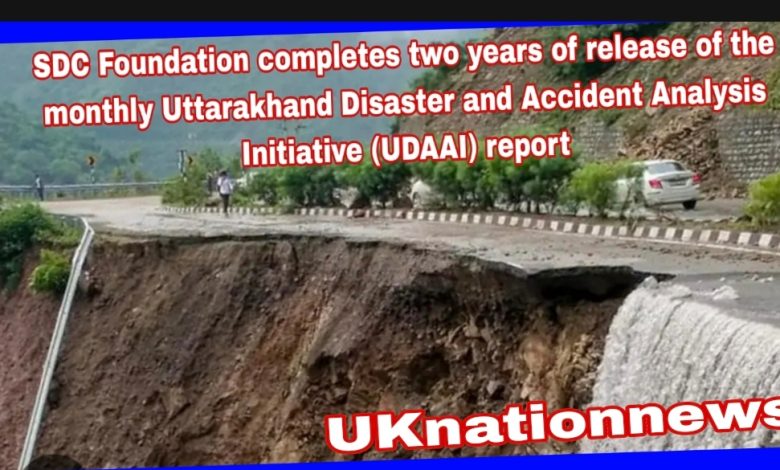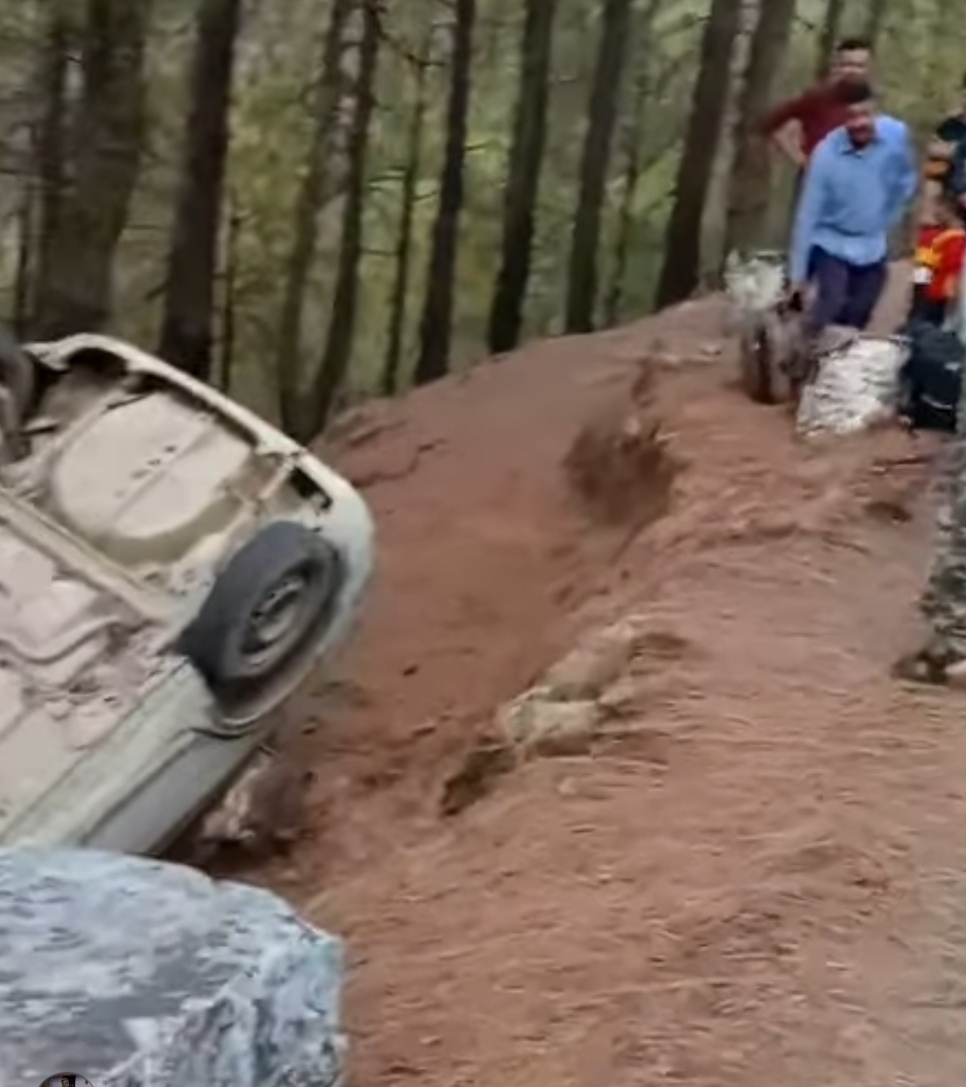Uttarakhand is confronting the increasing landslides, destruction in Kedarnath, plethora of closed roads, surfacing of old wounds and emerging new challenges
SDC Foundation completes two years of release of the monthly Uttarakhand Disaster and Accident Analysis Initiative (UDAAI) report

Dehradun:
The Dehradun based environmental action and advocacy group, SDC Foundation, has simultaneously released the Uttarakhand Disaster and Accident Analysis Initiative (UDAAI) reports for the three months of the 2024 monsoon season—July, August, and September. The evaluation of the three reports led to five major and critical highlights of Uttarakhand’s monsoon season: increasing landslides, devastation in Kedarnath, plethora of closed roads, surfacing of old wounds and emerging new challenges.
With the release of the three reports, SDC Foundation has completed two years of continuous monthly UDAAI reports, the first of which was published in October 2022.
The purpose of the UDAAI reports is to document the major disasters caused by climate change and other factors in the hilly state of Uttarakhand, the challenges posed by upcoming climate-induced disasters, and road accidents. Based on these reports and the articles and suggestions from experts, the SDC Foundation also published a book, Making Molehills of Mountains in Devbhoomi Uttarakhand 2023. According to SDC founder Anoop Nautiyal, work is underway on the 2024 edition, which is being made more comprehensive than last year’s publication.
Increasing Landslides
According to the UDAAI report, this year, like every other, Uttarakhand witnessed widespread devastation during the monsoon months. Throughout the season, there were continuous reports of deaths, disappearances, and people being swept away from various parts of the state.
The most concerning issue is that landslide zones are developing in the state. This monsoon season alone, a total of 500 landslide zones were identified. This information was shared during the Himalaya Day event at the Wadia Institute. It was noted that most of these landslide zones have developed due to construction activities.
Repeated Devastation in Kedarnath
Kedarnath experienced repeated landslides this year, affecting both road and pedestrian routes. The most significant disaster occurred on July 31, when heavy rains led to the deaths of nine people across the state.
In the two months of the monsoon, landslides and heavy rainfall claimed the lives of 20 pilgrims and locals on the Kedarnath route, with another 20 reported missing. These fatalities occurred not only due to landslides near Sonprayag but also along the Kedarnath walking track. The cycle of landslides and deaths continued from July through September.
In Tehri district’s Bhilangana block, heavy devastation occurred in the villages of Toli and Tingad where 16 houses were completely buried in debris. Among the victims were a mother and daughter.
Additionally, accidents were reported in Dehradun, Haridwar, and Khatima.
Hundreds of Roads Closed
Throughout the season, hundreds of roads were closed in Uttarakhand. Some roads remained closed for several days after they were first blocked.
On July 9, the Badrinath route was closed for 83 hours before it was reopened on the evening of July 12. On September 14, a report stated that 324 roads were closed across the state.
Old Wounds Remain Unhealed
Not only are landslide zones emerging, but old wounds are also being repeatedly aggravated. Among these are the landslides on Varunavat Mountain and the land subsidence in Joshimath.
Additionally, the landslide in Nainital’s Tiffin Top destroyed one of the town’s popular tourist spots, Dorothy’s Seat.
Emerging New Challenges
This monsoon season also brought forward several new challenges. One of the major issues is the deteriorating condition of school buildings. According to a report, 60% of the state’s government school buildings, numbering 11,465, are considered unsafe.
The state capital, Dehradun, is also among the areas at risk. A study by Amity University and the Wildlife Institute of India found that 289.8 square kilometers of the Doon Valley, or 16.6% of the area, is in a high landslide-risk zone. Many tourist spots in the valley are also included in this category.
UDAAI Reports and Disaster Management in Uttarakhand
Anoop Nautiyal stated that Uttarakhand urgently needs to strengthen its weak and inadequate disaster management framework and climate action efforts. He expressed hope that if the UDAAI monthly reports could be analysed, they could be useful for the state’s politicians, policymakers, and other stakeholders. Additionally, he hopes this documentation can be used to make policies aimed at reducing the damage caused by disasters.





